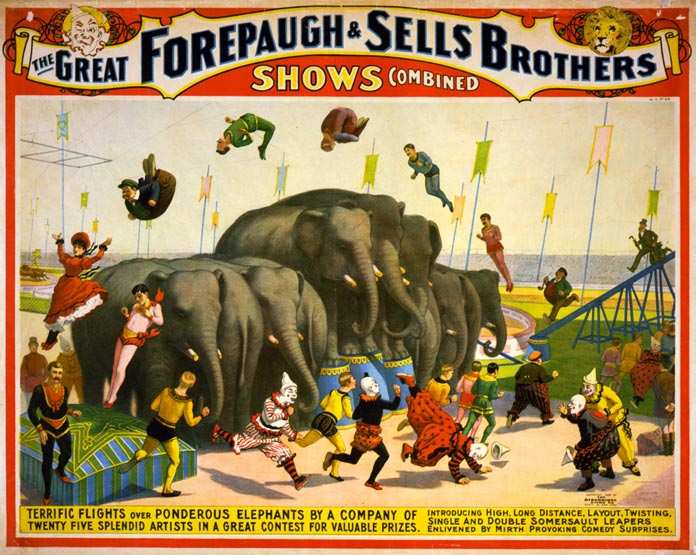Today In Pop Culture: The First Snuff Film
Published on January 4th, 2016 in: Movies, Science and Technology, Today In Pop Culture |There have been many alleged snuff films over the years. The term, defined as movies during which an actor is either murdered or commits suicide, was coined by Ed Sanders in The Family, his 1969 book about Charles Manson. However, there has never been any verifiable evidence of a snuff film existing. When you expand the scope outside of human mammals, things change drastically.
Horror films like Cannibal Holocaust and Nekromantik have captured real animal deaths on film, but there are many more “family friendly” films and TV shows in which animals have been killed, such as The Adventures of Milo and Otis or Snow Buddies. You’d have to go back to the early part of the 20th century to find the first animal snuff film, the grotesquely titled Electrocuting an Elephant.
Though less than two minutes in length, Electrocuting an Elephant is as gruesome and disturbing as any horror film. Surprisingly, most of the controversy about it arose from discussions of whether or not Thomas Edison himself filmed the event. Supposedly, the electrocution was part of the ongoing “War of Currents,” which pitted Edison Electric Light Company and Westinghouse Electric Company against each other in a battle over the superior form of current, either alternating current or direct current. Like many things, however, this “war” conflated three different issues (open competition between electric companies, the dangers of high voltage AC, and the introduction of the electric chair) and was mostly generated by the media. In addition, the “war” had ended by the time Topsy was killed in January 1903, and in fact, Edison no longer owned the company that bore his named, having been pushed out in 1892, when the “War of Currents” officially ceased.
What is indisputable is the long, sad history of Topsy the elephant. Named for a slave character in Uncle Tom’s Cabin, the poor creature was destined for a life of misery. Adam Forepaugh of the Forepaugh Circus smuggled her out of Asia in 1875, and thanks to the abysmal treatment of circus animals of the time, Topsy soon gained a reputation as a “bad” elephant. When one considers the decades of abuse she endured, it’s no wonder that she would eventually fight back.
A spectator at the circus named James Fielding Blount wandered into the elephant tent and started teasing them with a bottle of whiskey. Allegedly, he threw sand in Topsy’s face and the burned the tip of her trunk with a lit cigar. In response, Topsy “threw Blount to the ground with her trunk and then crushed him with her head, knees, or foot.” Media quickly seized on this story and generated articles claiming that Topsy had killed 12 men over her lifetime, but there has never been corroborating evidence to support this.
Topsy was then sold as a work animal to Paul Boynton, who owned Coney Island’s Sea Lion Park. During an incident when Topsy refused to continue to carry her drunk handler (William “Whitey” Alt) through the streets of Coney Island, he stabbed her with a pitchfork.
The clock was ticking for Topsy at this point. She was now deemed dangerous and Boynton couldn’t sell her to any other circuses or zoos. The decision was thus made to euthanize her. Electrocuting an Elephant, attributed to Edwin S. Porter or Jacob Blair Smith, was the final indignity for Topsy, her tragic life ended via electrocution and captured on film for posterity and human entertainment.

Time limit is exhausted. Please reload the CAPTCHA.